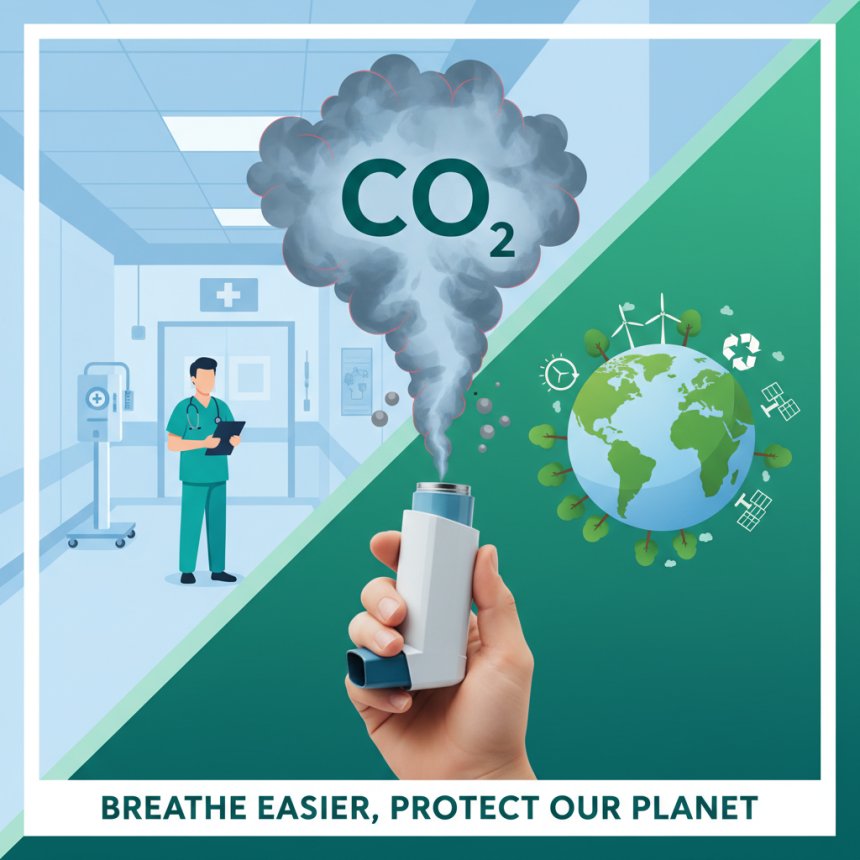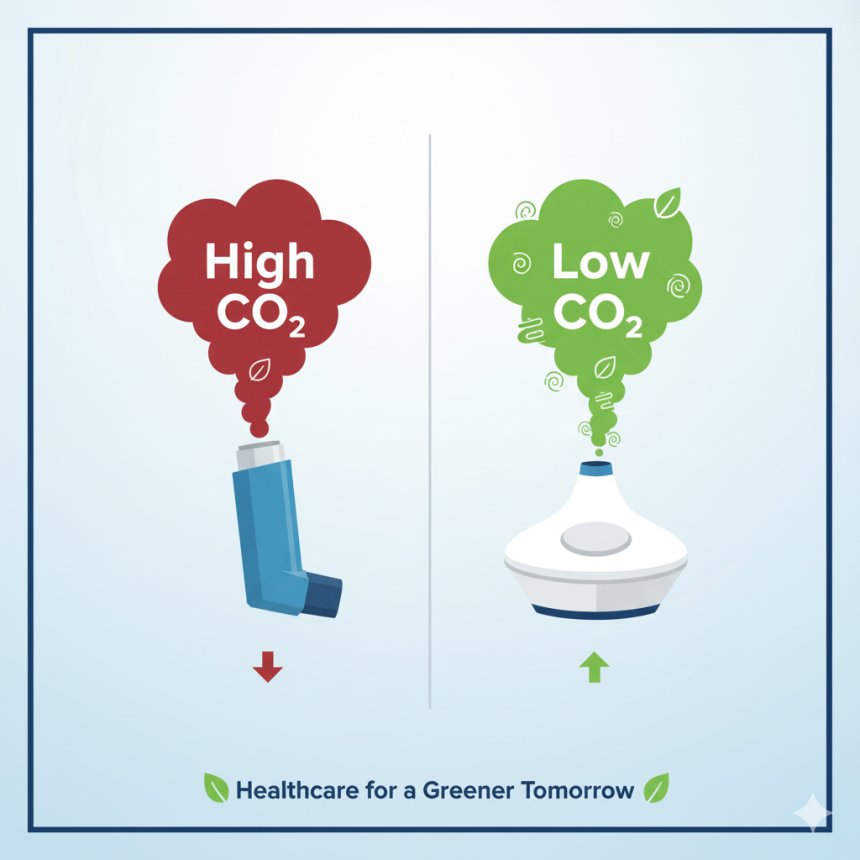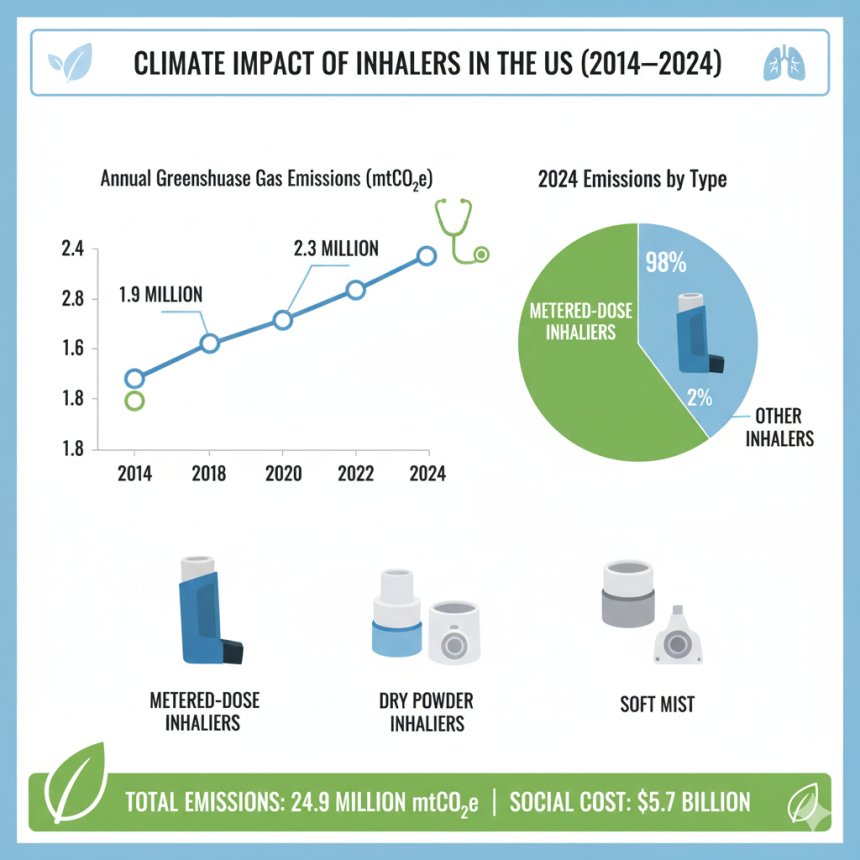Inhalers and Climate Change: A Decade of Greenhouse Gas Emissions in the US
A new JAMA study reveals that inhalers used for asthma and COPD contributed nearly 25 million metric tons of CO2 emissions in the US between 2014–2024, with metered-dose inhalers responsible for 98% of the impact. Here’s what it means for healthcare, patients, and climate change.

The Hidden Climate Cost of Inhalers
For millions of Americans living with asthma or chronic obstructive pulmonary disease (COPD), inhalers are lifesaving. But behind their therapeutic benefits lies an environmental burden.
A groundbreaking study published in JAMA (October 2025) by Dr. William B. Feldman and colleagues highlights the enormous climate footprint of inhalers in the United States. The study analyzed 1.6 billion inhalers dispensed between 2014 and 2024, uncovering their significant role in greenhouse gas emissions.

📊 Key Findings from the Study
-
Total Emissions: 24.9 million metric tons of CO₂ equivalent (mtCO₂e) were generated from inhaler use over the past decade.
-
Metered-Dose Inhalers (MDIs): Accounted for 98% of emissions, largely due to hydrofluoroalkane propellants.
-
Annual Increase: Emissions rose 24% from 2014 to 2024.
-
Top Contributors: Just three types—albuterol, budesonide-formoterol, and fluticasone propionate—made up 87% of total emissions.
-
Economic Impact: The social cost of emissions was estimated at $5.7 billion (with a range of $3.5–$10 billion).

Why This Matters
The findings are not just numbers—they highlight the tension between public health and planetary health. While inhalers save lives daily, the widespread use of MDIs with high global warming potential adds significant stress to the environment.
The US is already committed to phasing down hydrofluorocarbons under international agreements, but healthcare-related emissions remain a blind spot in climate discussions.
The Path Forward
The study suggests targeted solutions to reduce emissions without compromising patient care:
-
Shift Prescribing Habits: Encourage physicians and patients to use dry powder inhalers (DPIs) or soft mist inhalers, which are lower-emission alternatives.
-
Support Innovation: Promote the development of new MDIs with low–global warming potential (GWP) propellants.
-
Policy Action: Healthcare regulators and payers can incentivize greener options while ensuring affordability and access.
-
Patient Awareness: Educating patients about climate-friendly alternatives could shift consumer demand and drive systemic change.
Healthcare’s Climate Responsibility
This study is a wake-up call. As healthcare systems worldwide work toward sustainability goals, inhalers represent a clear and actionable opportunity to cut emissions.
Just as renewable energy transformed the energy sector, climate-smart prescribing can reshape the environmental impact of healthcare. By 2035, the widespread adoption of greener inhalers could prevent millions of tons of emissions—aligning health outcomes with climate action.
Conclusion
Inhalers are indispensable in managing asthma and COPD, but their environmental footprint is far from negligible. With nearly 25 million metric tons of CO₂ emitted in just 10 years, the need for climate-conscious prescribing is urgent.
As Dr. Feldman’s team emphasizes, “Shifting toward lower-emission inhalers may help reduce the climate impact of managing chronic respiratory disease.” This is not just a healthcare issue—it’s a planetary one.
References
-
Feldman WB, Han J, Raymakers AJN, et al. A Serial Cross-Sectional Analysis of Inhaler-Related Greenhouse Gas Emissions in the US, 2014–2024. JAMA. Published online October 6, 2025. doi:10.1001/jama.2025.16524
-
World Health Organization. Phasing Down Hydrofluorocarbons Under the Kigali Amendment. WHO, 2024.
-
U.S. Environmental Protection Agency (EPA). Hydrofluorocarbons and Climate Change.

















